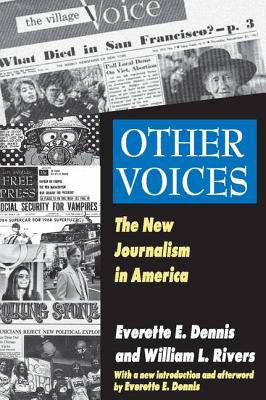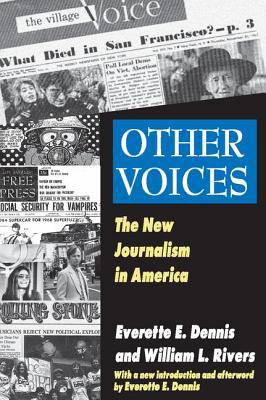
- Retrait gratuit dans votre magasin Club
- 7.000.000 titres dans notre catalogue
- Payer en toute sécurité
- Toujours un magasin près de chez vous
- Retrait gratuit dans votre magasin Club
- 7.000.0000 titres dans notre catalogue
- Payer en toute sécurité
- Toujours un magasin près de chez vous
Description
Conflicting journalistic voices that were raised in the past have become such a jumble that merely identifying them is difficult. Dennis and Rivers define, categorize, present, and examine the voices that contributed to what became known as "the new media" environment in the 1970s. This new journalism came about as a result of dissatisfaction with existing values and standards of the early 1960s style of journalism.
The authors are comprehensive in their concerns, as reflected in the national scope presented. They cover developments in the major cities, on both coasts, in the Middle West and South--in every major region of the United States. Most of the research required travel and interviews; all of it required reading almost endlessly and watching the video productions of journalists who built the structure of alternative television. Dennis and Rivers offer a representative view of forms and media, as well as the people who fashioned the new orientation.
The authors claim that the wrangling over objective and interpretative reporting misses the main point, which is that neither is in close touch with reality. The best objective report may cover all surfaces of an event, the best interpretative report may explain all its meanings, but both are bloodless, a world away from the experience. Color, flavor, atmosphere, the ultimate human meaning--all these, the new journalists contend, are far beyond the reach of traditional models of journalism. This is one of the central reasons for the emergence of different forms and practices in our time. This volume will help younger scholars understand the sources of quasi-journalistic practices extant today, including blogging and electronic-only publications.
Spécifications
Parties prenantes
- Auteur(s) :
- Editeur:
Contenu
- Nombre de pages :
- 236
- Langue:
- Anglais
Caractéristiques
- EAN:
- 9781412814553
- Date de parution :
- 15-11-10
- Format:
- Livre broché
- Format numérique:
- Trade paperback (VS)
- Dimensions :
- 152 mm x 226 mm
- Poids :
- 340 g

Les avis
Nous publions uniquement les avis qui respectent les conditions requises. Consultez nos conditions pour les avis.






